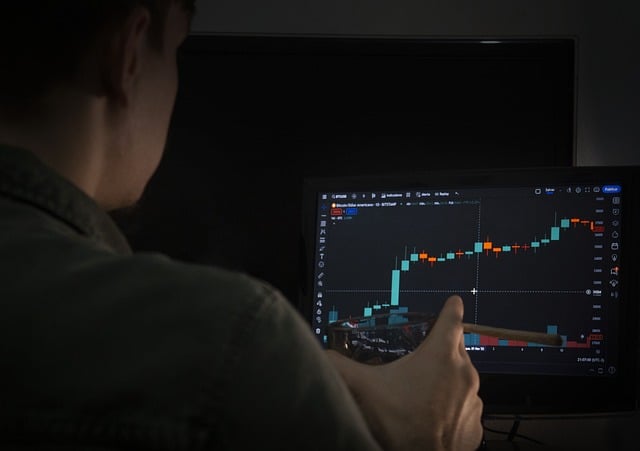The foreign exchange market is commonly referred to as the world’s largest financial marketplace with daily exchange exceeding trillions of dollars. Speculators in this market can potentially profit if the price fluctuations move in their favor. However, navigating this market remains challenging, and one should have a solid strategy, a good foundation of knowledge, and access to useful tools.
In this how-to guide, we will go through a very detailed step-by-step roadmap as a beginner with confidence and accuracy to start this forex investing venture.
Understanding the Forex Market
Before getting into actual trading, you should understand what the term forex market entails and how this market works in detail.
1. What is Forex Trading?
Forex trading involves buying one currency while selling another at the same time. The trade happens in pairs, like EUR/USD (Euro against the US Dollar). The investor aims to profit from changes in the exchange rate between the two currencies.
2. Why Trade Forex?
- Liquidity: The forex market operates 24/5, meaning there are plenty of opportunities to trade.
- Low Entry Costs: Forex trading often requires a much smaller initial investment than other markets.
- Leverage: Many brokers offer leverage, allowing traders to control large positions with smaller capital.
3. Risks in Forex Trading
- Market volatility can result in both profits and losses.
- Leverage amplifies both potential gains and risks.
- Global economic events and geopolitical issues can unpredictably impact exchange rates.
Step 1: Educate Yourself About Forex
Learn the Basics
Before making your first trade, take the time to understand:
- Currency pairs: Major, minor, and exotic pairs.
- Pips, spreads, and leverage.
- Fundamental and technical analysis.
Research Online Resources
Forex trading is widely available in online platforms that offer free tutorials, webinars, and e-books. Use sources that target beginners.
Step 2: Select a Trustworthy Forex Broker
A forex broker serves as your entrance to the forex market. A wrong choice may affect your trading experience.
What to Look for
1. Regulation: Ensure the broker is regulated by a credible authority to safeguard your trading activities.
2. Trading Platforms: A good broker offers advanced trading platforms with real-time data, charting tools, and user-friendly interfaces. Some platforms also include a metal trading platform for commodities like gold and silver, adding diversification to your portfolio.
3. Fees and Spreads: Look for competitive spreads and minimal hidden charges.
4. Customer Support: Reliable support ensures help is available when needed.
Popular Trading Platforms
Some widely used platforms include:
- MetaTrader 4 (MT4)
- MetaTrader 5 (MT5)
Step 3: Open a Demo Account
Most brokers offer demo accounts that mimic live trading but without actual risk of money. This is your chance to test trading strategies, learn the tools of the platform, and get accustomed to the movement of the market.
Advantages of a Demo Account
- Learning is risk-free.
- Testing several currency pairs.
- Using some other features, such as a metal trading platform, just for testing gold and silver trading.
Step 4: Plan Trading
Proper Forex Trading needs discipline and strategy. A good trading plan should include:
- Risk Management: State how much capital you are willing to risk per trade (for example, 1-2% of your account balance).
- Trading Goals: Setting realistic and measurable ones.
- Time Commitment: Decide whether you’ll trade full-time, part-time, or as a hobby.
- Preferred Trading Style: Identify whether you’re a day trader, or swing trader.
Step 5: Start with a Small Investment
While the allure of large profits is tempting, beginners should start with a modest investment to minimize potential losses.
Tips for Small Investments
- Use micro or mini accounts offered by brokers.
- Trade smaller lots to reduce risk.
Gradually increase your investment as you become more confident and gain experience.
Step 6: Utilize Analytical Tools
Forex trading relies much on analysis. Both fundamental and technical tools must be utilized to inform the trading decision.
Fundamental Analysis
Economic indicators, policies of central banks, and geopolitical events affecting the values of currency are to be monitored.
Technical Analysis
Study price charts, patterns, and trends.
Make use of Moving Averages, RSI, and Fibonacci Retracements among other indicators.
Many brokers make available these tools as part of their platforms, such as options on a trading platform for metal for more diversified market analysis.
Step 7: Track and Assess Trades
Forex is not a put-and-forget venture. Continuously track all open positions, assessing past trades to know what works and what doesn’t work.
Use Stop-Loss and Take-Profit Orders
Automate your trades to close at predetermined levels of profit or loss, securing your capital.
Step 8: Diversify Your Portfolio
Relying solely on forex may limit your investment potential. Diversify into other markets like commodities using a metal trading platform.
Benefits of Metal Trading
- Hedge Against Inflation: Precious metals like gold often retain value during economic uncertainty.
- Low Correlation with Forex: Metals can move independently of currency markets, providing balance to your portfolio.
Step 9: Stay Updated and Adapt
The forex market evolves continuously, influenced by global developments. Staying informed and adaptable is key to long-term success.
Sources for Updates
- Financial news websites.
- Economic calendars to track upcoming data releases.
- Broker notifications and analysis tools.
Step 10: Continuously Improve Your Skills
Even experienced traders face challenges. Commit to lifelong learning by:
- Reading books and blogs on forex and trading psychology.
- Attending workshops or joining trading communities.
- Testing new strategies in demo accounts.
Conclusion
Forex investing is a rewarding opportunity, but it requires careful diligence, a well-thought-out strategy, and the right tools for success. From choosing a reliable broker to exploring diverse markets through a trading platform, the steps outlined here provide a solid foundation for beginners.
Start small, learn continuously, and use advanced tools effectively. That’s the only way to unlock the full potential of forex trading while keeping the risks low. Take your first step today and potentially turn your financial aspirations into reality.
Image by Gabrielli Pereira from Pixabay (Free dor commercial use) Source
Image published on February 15, 2024




